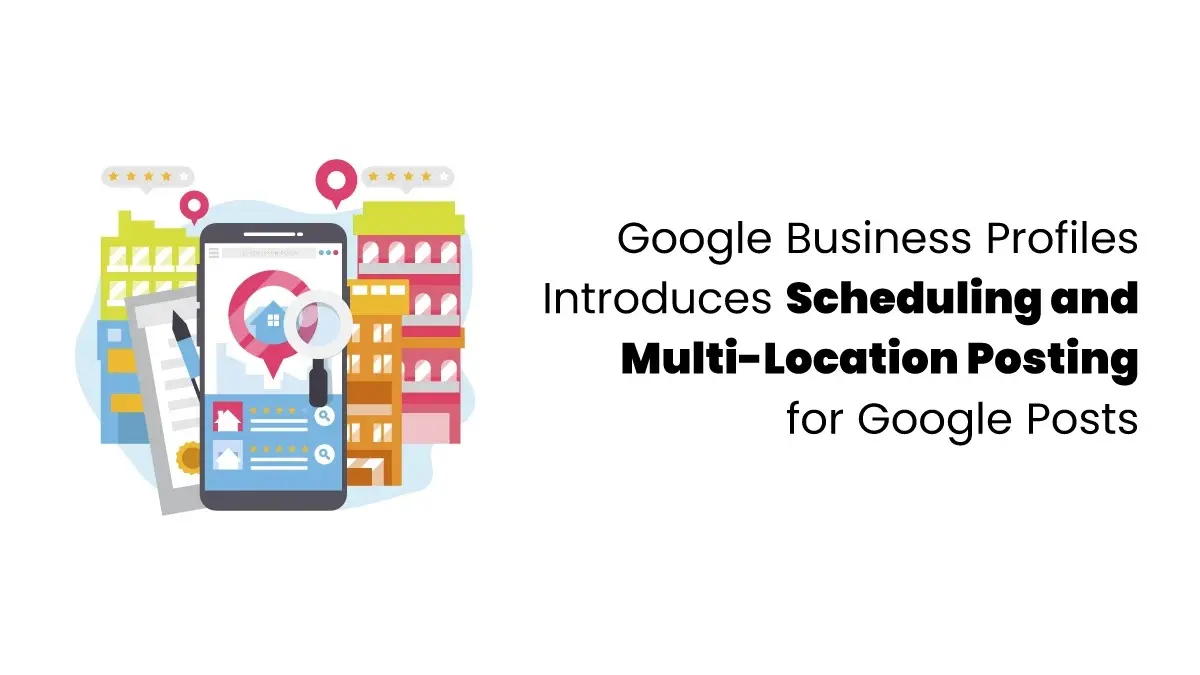In this modern era, traditional content is not recommended because we have a more predominant factor available, such as interactive content. Interactive content strategies can grab people’s attention and make them care about what companies sell. Repeatedly posting old content is useless, but companies can easily connect with people if they use the right interactive content strategies. If they implement engaging content ideas, this process can make a brand stand out and keep customers coming back.
The Power of Interactive Content
The most common practice nowadays is one-way content delivery, which means brands communicate and the audience listens simultaneously. However, interactive content always involves two-way communication, like in a chat. AI, eye-catching visuals, and custom features make people even more interested. Companies using this type of content will get noticed quickly, bringing people to their platform. This type of content helps build connections and keep the audience engaged by getting audiences involved.
Here are 10 great ways to use interactive content to boost audience engagement.
Conversational AI Chatbots
AI chatbots that can chat have become like having a competent helper online. They give people support that feels personal and happens right away. For businesses, this means shorter wait times for customers, better engagement, and happier people overall. These chatbots make things flow better, whether answering questions or helping someone buy something. They make customer service work a lot better.
Check out Maya, an AI chatbot in India that’s a good example. It gives pregnancy advice 24/7, sends appointment reminders, and gives emergency alerts. Because of Maya, hospital visits went up 40%, and there were fewer problems with pregnancies. Businesses should make the conversations personal if they want chatbots to work well. Now, AI can tell how a user feels and change its answers to sound more like a human. Soul Machines and similar companies are creating AI avatars that show facial expressions, which could enhance chatbot conversations.
Emotion Aware AI Experience
AI is getting better at sounding human. For example, there’s this Emotion-Aware AI that’s learning how you feel by looking at your face, listening to your voice, and reading what you write. This action means businesses can react in a way that feels more human. This technology is changing things like customer service, healthcare, and entertainment, as it can make online interactions more personal. Instead of giving the same old answer to everyone, AI can now change what it says and how it says it depending on your mood, which helps create a better understanding.
Check out Cogito, an AI tool that call centers use. It can tell how customers feel while on the phone with an agent. If the AI spots an annoyed customer, it tells the agent to try calming them down. Businesses can make the most of this by adding emotion AI to chatbots, virtual assistants, or even feedback surveys, so the responses feel more understanding and personal. Now they have AI that checks voices, faces, and text to guess how you feel. It’s getting good and making AI seem more human.
Instant AI-Powered Content
In today’s online world, speed is key. With AI, brands can create content super fast, reacting to what users do, what’s trending, and what people are into. Forget the old way of doing things—AI can quickly whip up blogs, social media posts, and product descriptions. That way, companies don’t fall behind and can always give people new and interesting content they’ll care about. Take Forbes’ AI tool, Bertie, for example. It helps journalists by suggesting headlines, summaries, and sources instantly. It’s made making content way faster without losing quality. If businesses want to use this tech well, they should add AI tools to how they create content. Use them to develop ideas, personalize content, and automate stuff. But don’t forget to keep that human feel. The newest thing is Generative AI, which changes content as people interact with it. This AI makes things more interesting and better than before because the AI changes things based on what people like and do.
AI-Crafted Personalized Media
In today’s online world, people want content that feels personal. AI helps make this happen by looking at what users do, what they like, and how they interact with stuff to create unique experiences. Things like custom video suggestions or emails that change based on your clicks are all thanks to AI, ensuring content clicks with people. This helps brands create better relationships, keep people interested, and increase sales because users feel understood.
Take Netflix, for example. Their AI system suggests movies and shows you might like based on what you’ve watched before, what you rate, and even how long you watch specific genres. This helps keep people watching because the kind of movies they see interests them. For businesses, using AI media tools in their marketing can make customers happier and more loyal. AI deepfake technology is the new cool thing for personal ads. Now brands can create personalized video messages that call each person by name, making digital marketing easier and more interesting.

Smart AR Glasses & Wearables
AR glasses and wearables are changing how we use the digital world. They can mix what you see in front of you with what’s on a screen. You can get information without using your hands, see where you are in real time, and have interactive experiences. This is helpful in areas like stores, hospitals, and schools. Brands use these wearables to get people more involved. Imagine trying on clothes without changing, getting help when needed, or exploring content quickly. It’s making digital matters smoother, personal, and more enjoyable.
For example, check out IKEA Place, which lets you use AR to see how furniture would look in your house. If people have AR glasses, they can see if that couch or table even fits before they buy it, which is cool because it means fewer returns and folks being more sure about buying things online. Businesses can also use AR wearables for virtual try-ons, training, or even just giving workers a way to get hands-free help, which can get more customers into stuff. The latest thing is AR, which uses AI to change your preferences. Companies like Meta and Google are putting AI into AR wearables to change it based on what you want, making the whole thing way more accurate and reasonable.
Touch & Motion Feedback Technology
Haptic technology is changing how we experience digital things. This technology makes you physically feel virtual objects using vibrations, pressure, and movement. You’ll find it in games, VR, and even medical use, where it will make things much more accurate. Think about experiencing the recoil of a gun in a video game, or allowing doctors to practice with real touch feedback. Haptic technology is a way to connect what you see on a screen with what you can physically touch.
Check out Sony’s DualSense controller for the PlayStation 5. It changed gaming by giving players spot-on haptic feedback and adaptive triggers. These triggers copy how things feel in real life, like tension and texture. This makes the game feel much more realistic, enhancing every movement. Businesses could use this kind of technology in training, working remotely with others, and making customers feel more engaged and like they’re there. The newest thing now is AI haptics, where the AI changes how things feel based on what the user does. Companies like Ultraleap are working on AI that makes you feel like you’re touching things in the air, so you can play with digital stuff without touching a screen. This opens the way for touch-free interfaces that feel like the future.
Immersive AR & VR Experiences
AR and VR are changing how we interact with digital things, making things more interactive and real. Companies can now build cool environments where people can check out products, services, or stories in a much more engaging way. Take Hyundai’s AR User Manual, for example. Car owners can just point their phone at their car to get interactive, step-by-step guides on maintaining it. This cool idea makes things easier for users and cuts down on the need for old-school manuals, making info easier to get and understand.
For virtual and augmented reality to work, firms must make them simple to use. A cool step forward is Neural Adaptive VR. It’s where AI keeps an eye on what you look at, how you react, and what you feel. Then, it changes the VR world as you go. Some companies, such as Neurable, are working on tech that reads your brain activity, meaning a better experience, and making it easier to interact with what you see. As things improve, the businesses that use smart AR and VR will do better at keeping people interested.
Real-Time 3D World Generation
Real-time 3D world generation makes digital environments quick, so people can check them out and mess around with them as they change. This tech is changing gaming, virtual travel, and training stuff. A cool example is BMW’s Virtual Factory, which first uses 3D models to design and test production lines. This helps them find problems early, which saves them cash and time. With AI 3D modeling, they can change stuff as they go, making things work better and run smoother.
This technology lets businesses build cool virtual spaces that people will want to explore. For example, Google Maps has an Immersive View that uses AI and 3D information to make cities look real. You can check out streets, buildings, and even the weather before you go somewhere. As AI gets better, real estate, stores, and schools can use these 3D places to give people a better experience. It’ll be much easier to make good choices.
Brain-Controlled Interactions
Brain-controlled technology lets you boss around gadgets just by thinking about it! This is a game-changer for medicine, gaming, and making things easier for people with disabilities. Synchron’s Brain Implant is a great example. It helps paralyzed people talk and use computers just by using their minds. What’s cool is that Synchron’s implant goes in through blood vessels instead of cutting into the brain, which is way safer. This helps people get their freedom back. It shows how brain-computer interfaces can change lives.
For businesses, adding technology that uses your thoughts could make things way better for users. Meta has a cool, fresh AI called the Silent Speech Interface that reads brain signals, so you don’t need to use your hands to work it. Imagine being able to control your phone, mess around in AR/VR, or type just by thinking about it. As this technology improves, it will seriously change how things work in areas like helping people with disabilities, gaming, and making smart homes, making everything faster and easier to use.
Blockchain-Backed Digital Content
Blockchain is good at keeping digital content safe. It can prove who owns something and stop people from making copies without permission. Instead of depending on big corporations to handle rights, creators can use blockchain to keep tabs on and sell their creations themselves. Take NBA Top Shot, for example. They turn basketball highlights into digital collectibles so fans can buy, sell, and trade them because each clip is one of a kind and safely stored on the blockchain.
Content creators should check out blockchain-based publishing platforms. These allow writers, artists, and musicians to earn directly from their fans without losing control over their work. Recently, decentralized video platforms have popped up, where creators can get paid in cryptocurrency based on how many views and interactions their content gets. This way, they can make fair earnings without depending on ads.
Conclusion
Interactive content strategies are a great way for brands to get noticed because they make things more fun and memorable for users. When businesses use content that people want to play with, they build stronger relationships with their audience, which helps keep customers coming back. This could involve using AI to personalize content, creating AR experiences, or interacting with users in real time. The point is to keep people interested and wanting more.
If you want to stay on top in this fast-moving field, taking a digital marketing training program is worthwhile. Good training gives marketers the skills to create cool, interactive stuff that excites people and makes the business grow. Signing up for a digital marketing course can give you handy tips on making eye-catching interactive content that brings in more visitors, increases conversions, and boosts your brand’s presence.









